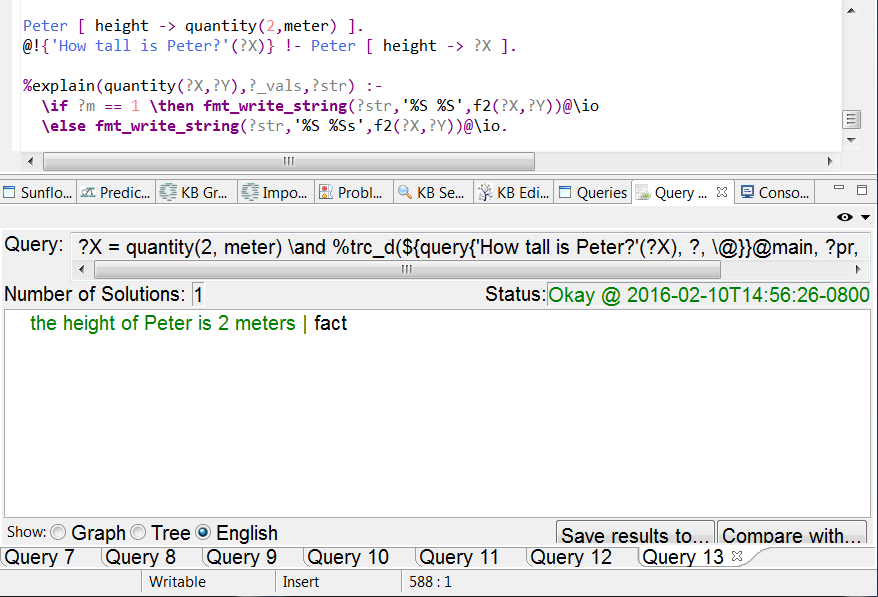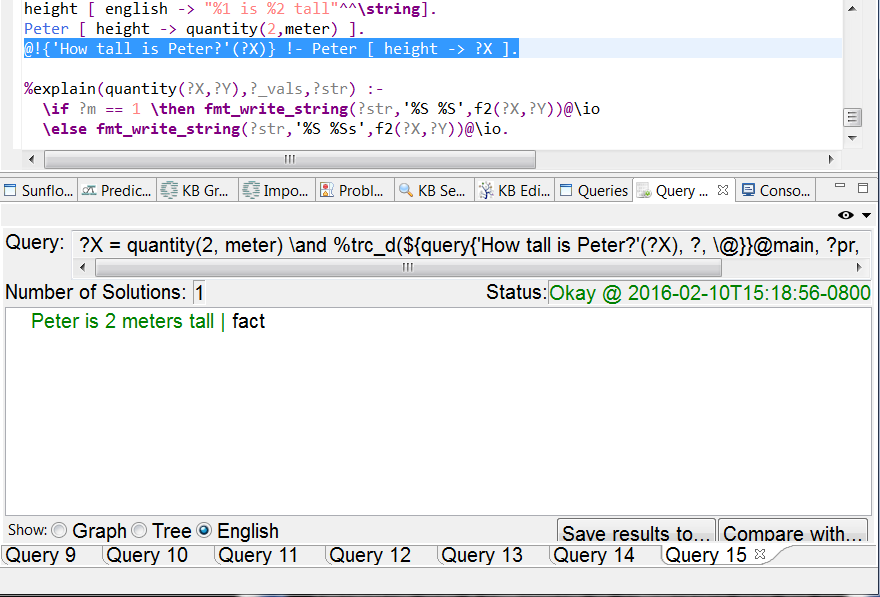Annotation using the special explain predicate¶
In cases where the english property is still not enough, we support a special predicate, %explain, which allows the user to write arbitrary rules for english paraphrasing. This is primarily used for those rare cases where you need to paraphrase unusual term forms (e.g. lists) in a non-standard way, or need to do some other computations in order to produce the paraphrase.
For example, suppose we want to paraphrase the quantity functional term as mentioned in Section Annotation using the english property, but without the plural ’s’ when the magnitude is 1. Then we can write an explain-rule as follows:
%explain(quantity(?X,?Y),?_vals,?str) :-
\if ?m == 1 \then fmt_write_string(?str,'%S %S',f2(?X,?Y))@\io
\else fmt_write_string(?str,'%S %Ss',f2(?X,?Y))@\io.
Note that this simple example glosses over many details of English morphology such as:
Suppose we use the functional term quantity as follows:
Peter [ height -> quantity(2,meter) ].
@!{'How tall is Peter?'(?X)} !- Peter [ height -> ?X ].
If we execute the query ’How tall is Peter?’ and click the question mark to see the result explanations in English mode, we will see the explanation paraphrased using the %explain rule, as shown in Fig. 299.

Fig. 299 The option English explains using the %explain rule for quantity
Suppose we add an english property to annotate the height property as follows:
height[english->"%1 is %2 tall"^^\string].
Execute the query ’How tall is Peter?’ again. The result explanation will be paraphrased using a combination of the %explain rule and the english property for quantity, as shown in Fig. 300.

Fig. 300 Explanation uses a combination of %explain rule and english property